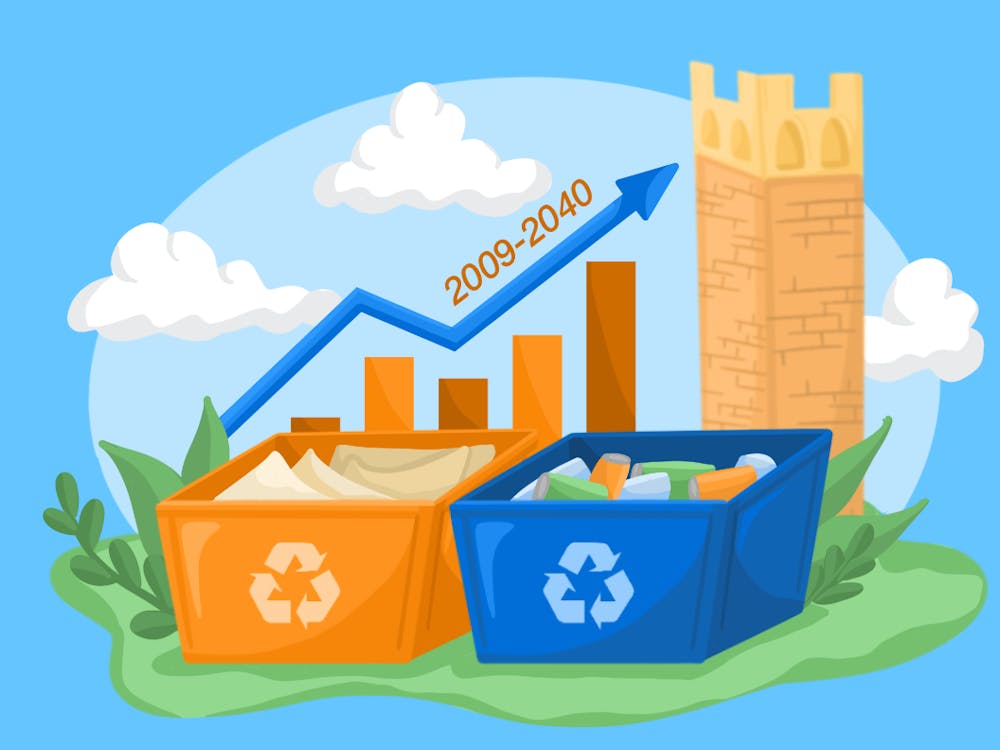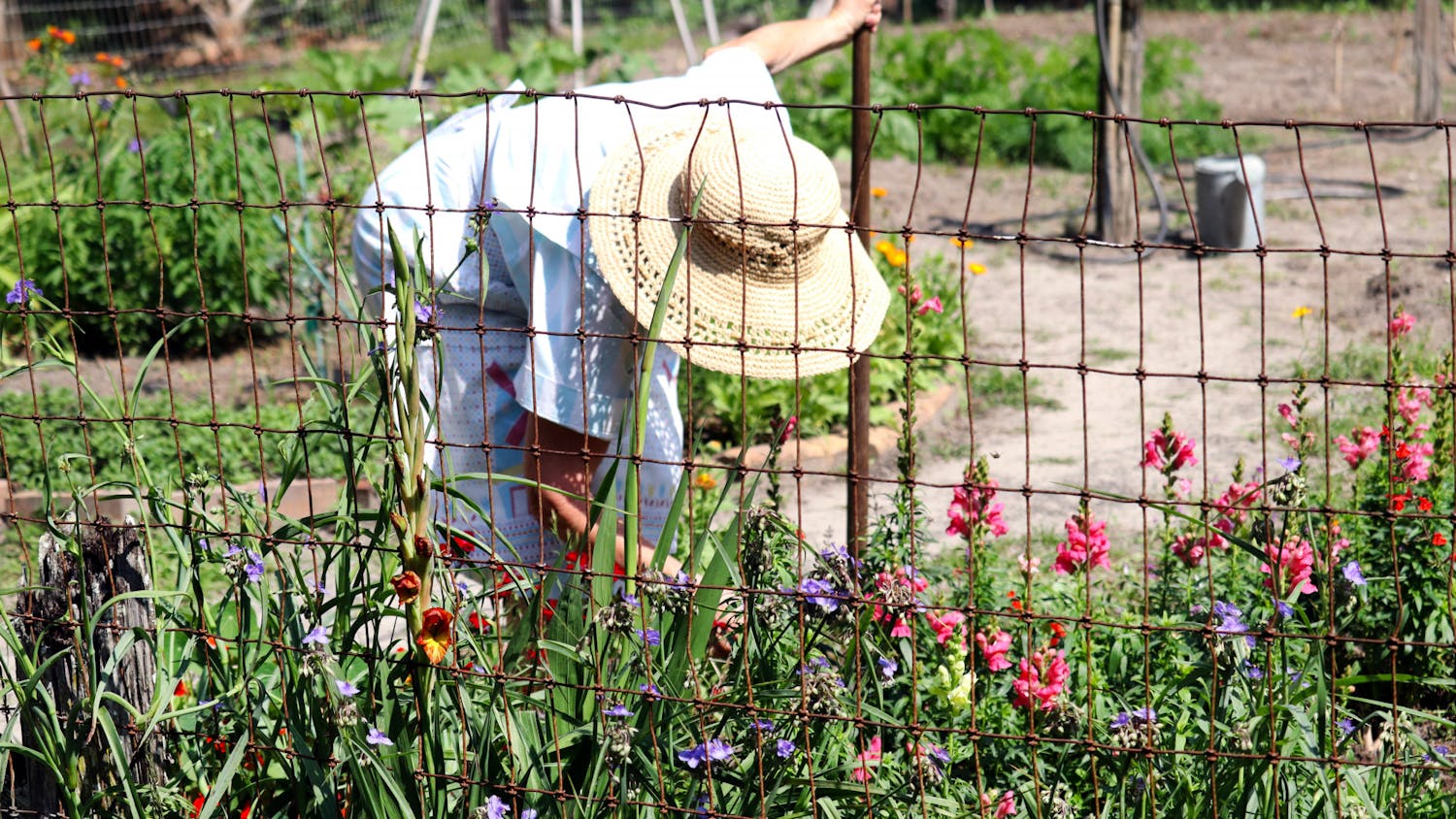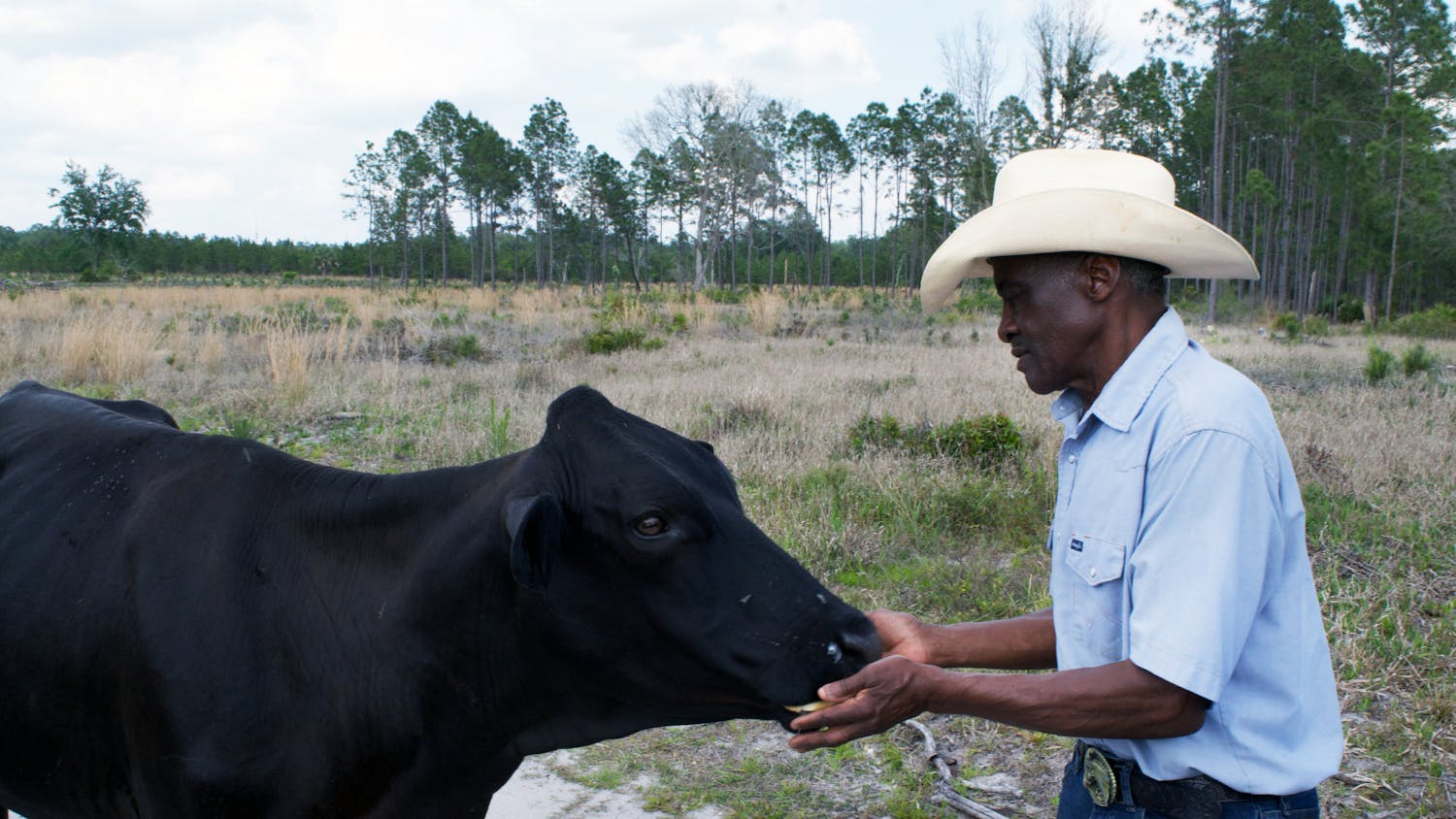UF first promised to become a leader in climate change mitigation among universities in 2006. Seventeen years later, it’s busy renewing its vows to meet the needs of the shifting climate.
The UF Office of Sustainability is in the final stages of developing its Climate Action Plan 2.0, a revival of CAP 1.0, the 2009 original, meant to curb the university’s greenhouse gas emissions.
The plan is organized into five points: energy and buildings; transportation; education and research; resilience; and offsets and finance. The categories take aim at the university’s energy consumption, promote low-carbon transportation and establish guidelines for sustainable buildings — all while hoping to secure $15 million in a centralized fund to finance those goals.
The new plan is the first update to the original plan from 14 years ago, which was supported by former UF President Bernie Machen. The Office of Sustainability has been renovating the plan ever since, said Liz Storn, senior program coordinator.
“Obviously, actions are happening all the time across campus that make the campus more sustainable,” she said. “But this is really one way to bring them all together and really account for all the great stuff that is happening.”
However, the plan now sits in limbo while the Office of Sustainability waits for the right time to present it to UF President Ben Sasse or other senior vice presidents, Storn said.
“The actions that we have make sense for the university as a whole,” Storn said. “We had 80 or more people involved in the drafting of this process. There is a lot of buy-in from campus for it.”
Storn is confident the plan will be approved, she said.
UF spokesperson Cynthia Roldan declined to answer questions on Sasse’s behalf about whether he would support the initiatives. James Wegmann, a spokesperson on the new president’s transition team, didn’t return requests for comment, and Sasse hasn’t responded to The Alligator’s interview requests since he took office in February.
Before the plan’s first version was published, Machen was one of 12 college and university presidents to sign a commitment to curtail climate change in 2006 — and, in the process, tried to establish UF as a sustainability leader within the academic world.
Machen himself became a beacon of climate hope on campus: The president gave an annual “State of Sustainability” address on UF’s Campus Earth Day, and he even received a “green valentine” from students thanking him for his climate efforts in 2009.
“If you took the campus map and threw a dart anywhere on it, you would likely hit an area that has been impacted by our sustainability efforts,” he said during his 2011 sustainability speech.
Last month, UF received $20,000 worth of free consultations with Second Nature, the non-profit that oversaw The Presidents’ Climate Leadership Commitments. As one of nine universities and the only in Florida to earn the stipend, UF will put the money toward shifting to renewable energy.
It was under Machen’s tenure that the university started to track emissions and officially formed the Office of Sustainability. Soon after, the original climate action plan appeared.
Between 2009 and today, the Office of Sustainability worked toward completing CAP 1.0 while developing CAP 2.0.
While some of UF’s original climate goals were completed, others failed or were reiterated in CAP 2.0. In 2006, the university promised to achieve zero waste — when 90% or more of waste is not put in landfills — by 2015, but it failed on that promise when the deadline came.
The university continues to double down on its 2009 promise of carbon neutrality, meaning the university would spend the same amount of carbon as it takes in, bringing net carbon emissions to zero, by 2025 in CAP 2.0.
In order to meet that goal, UF is developing a policy in which it would buy carbon offsets — that is, a transferable credit that counts toward reducing carbon emissions. For example, if UF wants to emit two units of greenhouse gases, it can purchase two units of carbon offsets from another company; the second company then has to reduce its emissions by an equivalent amount.
UF is looking into the highest-value carbon offsets to help reach climate neutrality, Storn said. But the larger goal is to become climate neutral without having to purchase offsets, she said — meaning the university emits no greenhouse gases at all in the future.
“The goal is to do this in a way that supports students, supports research, supports academics and is efficient and effective,” she said. “We don't want to just go out there and be just spending money. We want to do it in a way that makes an actual difference.”
UF Planning, Design and Construction is on its own mission to reduce carbon output from campus buildings: Both versions of CAP require constructions and renovations that cost $4 million or more to reach at least LEED Gold certification or equivalent.
Leadership in Energy and Environmental Design (LEED) certifications assure that buildings have met certain standards for sustainability, including lower energy use, healthy air quality and long-lasting materials.
Gold is LEED’s second-highest certification, trumped only by Platinum. UF also participates in other certification programs that similarly evaluate buildings’ sustainability, including the Florida Green Building Coalition and WELL.
UF will celebrate its 100th building to obtain certification in Fall after the construction of the Malachowsky Hall for Data Science and Information Technology, located on Museum Road.
In 2009, only three buildings at UF had Gold or Platinum stamps. UF’s first LEED Gold certification was awarded in 2004 to Rinker Hall. Today, UF has more certifications than any other public university in the country, said Dustin Stephany, UF’s sustainable building coordinator.
The 100th certification project, budgeted at more than $150 million, is going to be “epic,” Stephany said. As well as obtaining LEED Platinum status, its roof will serve as the largest solar panel array on campus, and its windows will automatically tint as sunlight hits different sides of the building throughout the day.
Alexis Barry, a 22-year-old UF senior majoring in sustainability and the built environment, works alongside Stephany to ensure buildings meet sustainability standards. Sustainable buildings are more economical in the long run, she said, as they help the university save on energy and water bills.
“We're tracking our water,” she said. “We're tracking our energy. We're able to see what we're saving on and what opportunities we can maybe take in the future to save the university even more money.”
Though there’s always more we can do to support the climate, Barry said, UF is already ahead in bringing awareness to climate issues and leading the state in its efforts. Other universities, including the University of South Florida, have adopted their own climate efforts.
“This domino effect, over time, will not only educate more people but set other examples,” she said. “Hopefully, we're just spreading the word.”
Contact Alissa at agary@alligator.org. Follow her on Twitter @AlissaGary1.

Alissa is the Fall 2025 editor-in-chief of The Alligator. She has previously been engagement managing editor and university editor, and she has covered stories across UF and Gainesville. She was also an intern at the Orlando Sentinel and The Chronicle of Higher Education. In her free time, she likes to spend time with her cat and take care of her plants.






